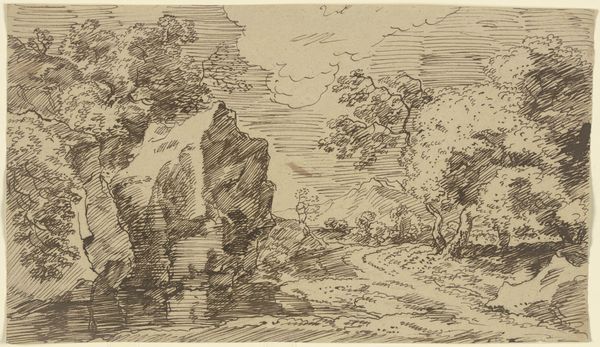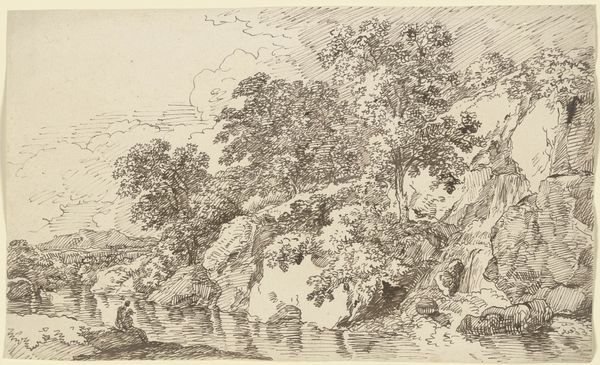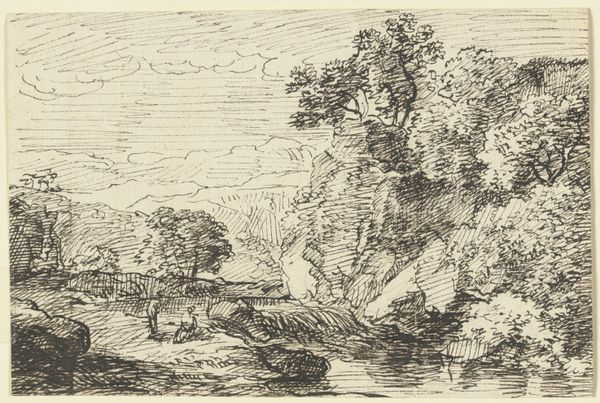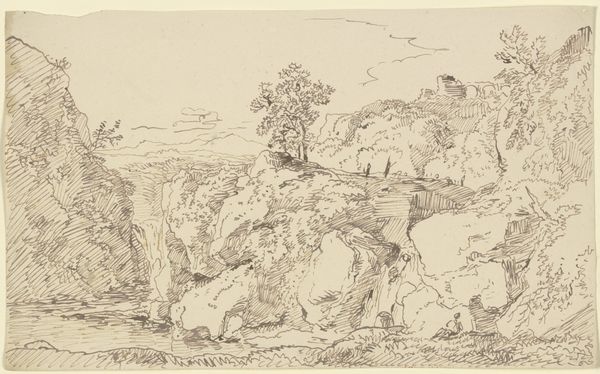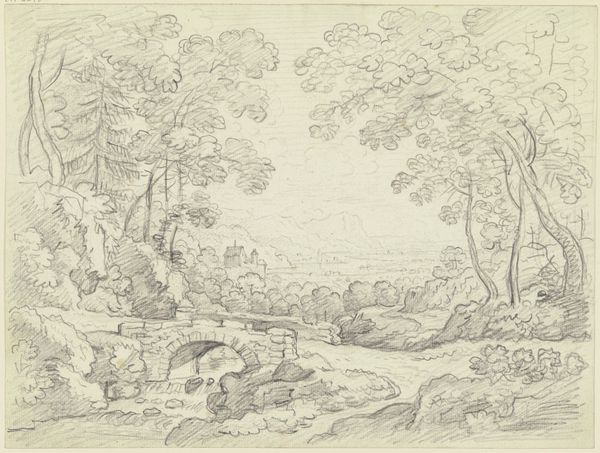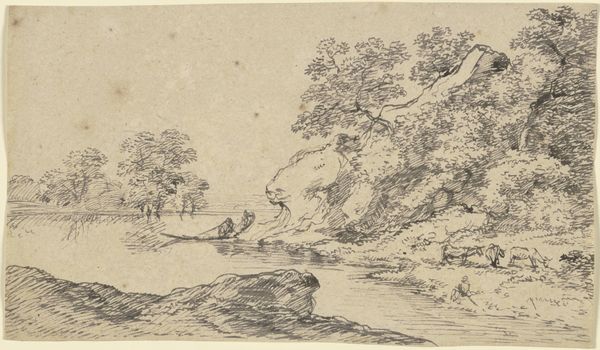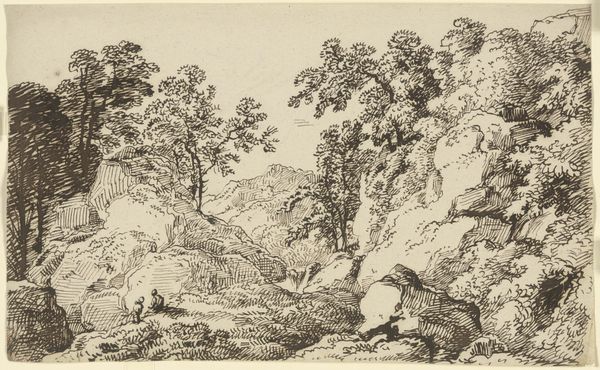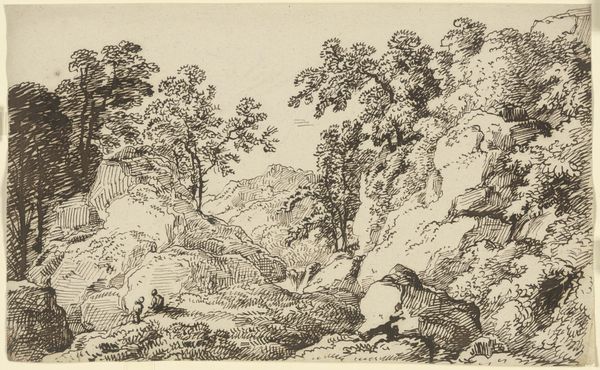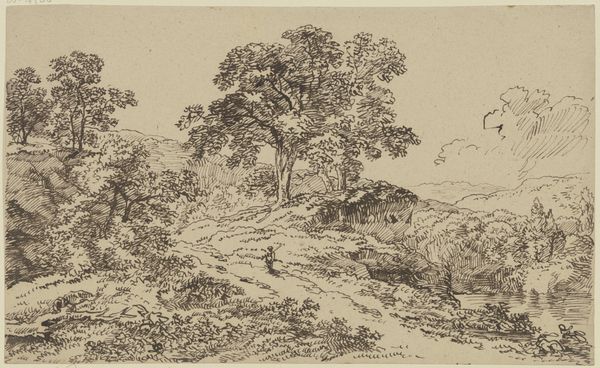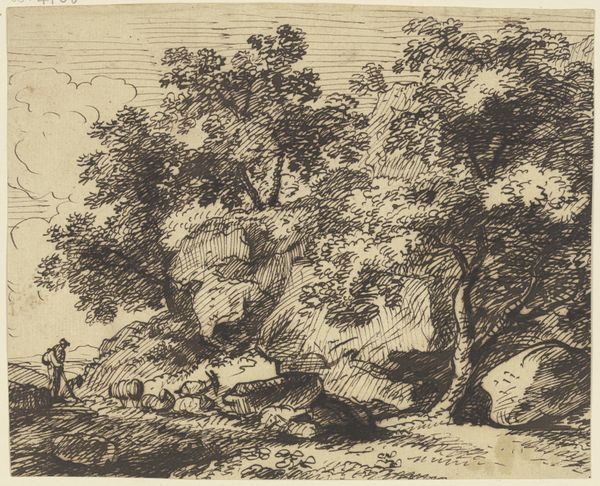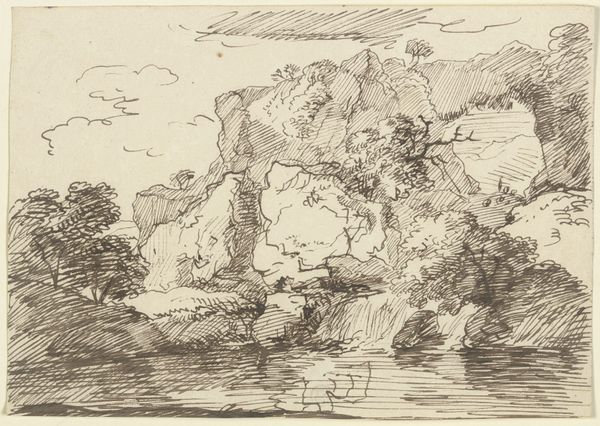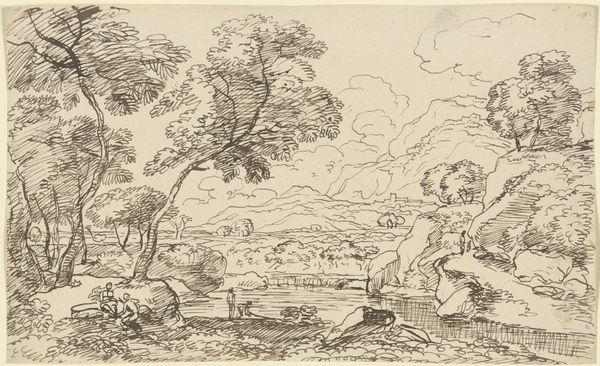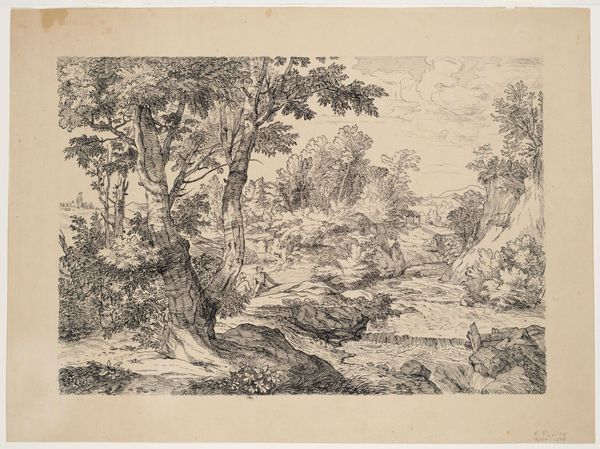
drawing, tempera, ink, pencil
#
drawing
#
ink painting
#
tempera
#
pencil sketch
#
landscape
#
form
#
ink
#
romanticism
#
pencil
#
line
#
genre-painting
#
watercolor
#
realism
Copyright: Public Domain
Curator: This evocative drawing, attributed to Franz Kobell, presents us with a "Shepherds and Herd in a Rocky, Wooded Landscape," a delicate dance of ink, tempera, and pencil on paper, housed here at the Städel Museum. Editor: The immediate impression is one of peaceful contemplation. The muted tones create a serene atmosphere, almost dreamlike. There's a gentle harmony in how the herd is nestled into this wild landscape. Curator: Precisely. While undated, its style suggests an exploration of Romantic ideals—a longing for an idealized pastoral life, quite removed from the increasingly industrializing world of the time. It presents a visual trope reflecting social anxieties concerning vanishing rural life. Editor: Yes, the shepherd, almost dwarfed by the rocks, certainly speaks to that. I'm particularly struck by the symbolism of the rocks themselves. Their immovability seems to ground the fleeting nature of human existence in something far more permanent. It's a timeless symbol of steadfastness. Curator: Furthermore, depictions of shepherds have long carried religious connotations—think of the Good Shepherd. While Kobell doesn't explicitly present any religious symbols, the very presence of the herder might subliminally echo these values within society. Editor: An echo, yes. There's also a sense of vulnerability evoked by the herd, relying on their protector. The dog there feels almost like a guardian spirit. One must also consider the visual narrative in relation to societal structures; shepherds evoke governance. Curator: An excellent point. Images like these aren't just idyllic scenes; they function within a market of political imagery too. Were such works commissioned? Did they help project certain social ideas about rural virtue and industriousness among the agrarian classes? Editor: It makes you wonder what impact these symbols and settings had on the intended viewers, shaping the values of the period, or perhaps merely fulfilling expectations... it provides endless food for thought. Curator: Absolutely. A landscape that's more than just topography – it's imbued with symbolic weight. Editor: Yes, images layered with memory!
Comments
No comments
Be the first to comment and join the conversation on the ultimate creative platform.
